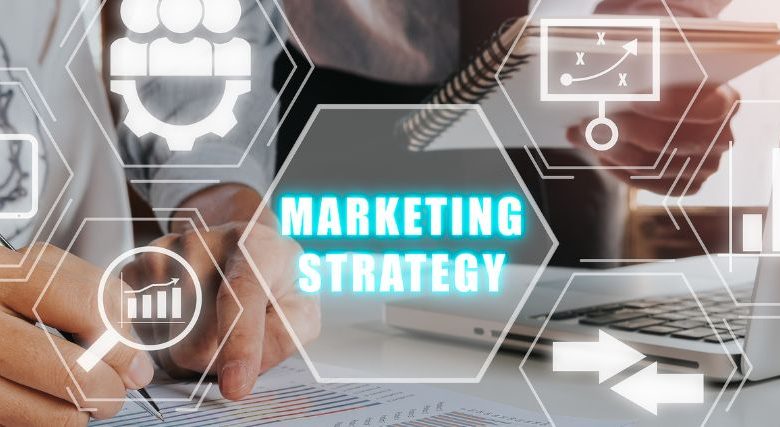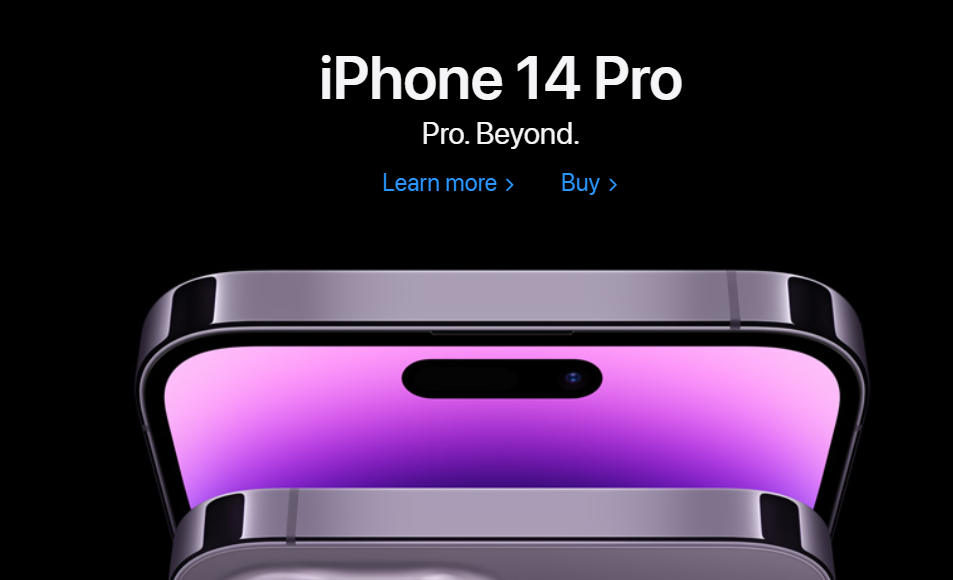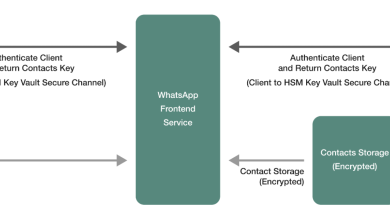Marketing Strategy: In-Depth Guide [Plus 16 Proven Strategies]

The marketing strategy is a critical factor that determines whether a business succeeds or fails. All companies know if they want to generate revenue and opportunities in today’s competitive world, they need to hire the top marketing strategists.
Yet, many organizations still think they can dive into marketing without a pre-established plan. A marketing strategy is how you define exactly how you’re going to reach your audience, how you’re going to determine whether a campaign has been successful, and how you’re going to generate consistent growth.
It’s what keeps your employees and other contracted professionals on the same page when building promotional campaigns. Marketing strategies ensure you can develop a consistent presence (both online and offline) and generate a real, measurable ROI (Return on Investment) from each marketing effort. Without them, you’re essentially diving in blind.
Here’s everything you need to know about developing a compelling marketing strategy, as well as some behind-the-scenes insights into the top marketing tactics.
What is a Marketing Strategy?
Let’s start with the basics: What is a marketing strategy?
The term “marketing strategy” refers to any comprehensive plan for promotion. Your strategy maps out exactly how, where, and when you’re going to connect with your audience and what kind of goals you’re going to be trying to achieve.
While the exact nature of a marketing strategy can vary from one brand to the next, it should always provide a detailed, structured set of promotional guidelines to follow. Marketing strategies align your team to specific goals, help you tie your efforts to specific objectives, and ensure you can identify and examine what resonates best with your target audience.
Some of the core components of a marketing strategy include:
- Your Marketing Mix: Your marketing mix, otherwise known as the “4 P’s” of marketing, outlines the core components of what you’re going to be selling and how you’re going to be promoting it. You’ll use this document to define your Product, Price points, Place (Where you’re selling), and Promotional strategies (which tactics you’ll use for marketing).
- Marketing objectives: In a marketing strategy, your objectives outline the specific goals you want to achieve with your marketing efforts. They highlight exactly what you’re trying to accomplish, such as increased brand visibility and awareness, improved reputation, higher credibility, increased sales, and better audience retention.
- Marketing budget: Your budget defines exactly how much money and resources you’re willing to dedicate to each part of your promotional strategy. It looks at funds allocated to hiring the right talent, using the correct software, and promoting on various channels.
- Competitive analysis: Most marketing strategies will also provide insight into the competitors in your market. They can include insights into the marketing tactics your competitors are already using, their target audience, as well as their strengths and weaknesses.
- Segmentation, targeting, and positioning: Marketing strategies also include “STP” documents, which highlight your target audience, and the specific segment of customers you want to reach, as well as the position of your brand in relation to other companies. In other words, they define what makes you unique in your industry.
- Metrics and KPIs: A good marketing strategy should provide insight into the key metrics and key performance indicators you need to track to determine whether your marketing campaigns are successful. They’ll give you behind-the-scenes insights into what you need to monitor and analyze when optimizing your campaigns.
Why is Marketing Strategy Important?
So, why is it so important to learn how to develop a marketing strategy? The simple answer is that marketing strategies give you focus and direction. A robust strategy will ensure you can effectively reach your target audience and get the best ROI (Return on Investment) from each campaign.
Without a marketing strategy, you’re really just “guessing” at what might work. You won’t be able to effectively monitor whether your influencer campaigns are driving results or determine why one campaign might work better than another.
In fact, marketing strategies are so effective at generating positive results studies have shown companies with a documented strategy are 538% more likely to report being successful.
Marketing strategies:
- Help you define your customers: They give you a behind-the-scenes insight into your user personas, their pain points, and their goals, so you can design more relevant and engaging campaigns. They ensure every message you create is tailored to the right customer.
- Refine your brand: With a marketing strategy, you define exactly what makes your company special, why it stands out in a specific market, and what it can offer. This can help you to position yourself more effectively in relation to other companies.
- Ensure consistency: With a marketing strategy, you’re more likely to convey your value in a consistent, relatable way. You can set up comprehensive plans for each marketing tactic which help to preserve the identity you want to build.
- Keep you within budget: A marketing strategy also helps to reduce the risk of overspending by ensuring you know exactly what resources you can allocate to each part of your strategy. This ensures you don’t have to worry as much about unexpected expenses.
- Ensure you reach your goals: Marketing strategies help you to define your goals and create clear, consistent plans for reaching them. They ensure you have the right metrics to track and that you know which analytics you should be monitoring when generating campaigns.
How to Develop a Marketing Strategy: Step by Step

Now we’ve determined what a marketing strategy is and why it’s so important, it’s time to start looking at how you can develop your own. As mentioned above, marketing strategies can differ depending on your unique approach to promotion. However, there are some core steps virtually every business should consider. Let’s dive in.
Step 1: Define Business Goals and Objectives
The first step in developing any successful marketing strategy is understanding exactly what you want to achieve. The goals you set for your marketing efforts can vary from one campaign to the next. For instance, you might decide your core goal for a content marketing campaign is to raise brand awareness and visibility, while your influencer strategy is designed to boost your credibility.
Setting goals is crucial because it provides you with a clear vision to work towards. With the right goals, you’ll know how to monitor your progress and define when your campaigns are successful.
The best marketing goals will always be SMART; in other words, they should be:
- Specific: Don’t just say you want your marketing strategy to increase sales. Determine exactly how much of a profit increase you want to see, what products you want to promote, and how you’re going to convert and attract customers.
- Measurable: Your marketing strategies should always be easy to measure. Define the core KPIs and metrics associated with success in each campaign. For instance, if your goal is to increase engagement, you might track likes, shares, and mentions across social media.
- Achievable: Setting lofty goals for your marketing campaigns is great, but it’s important to ensure you can really achieve them. Ensure you have the resources you need in place to actually accomplish your targets.
- Realistic/Relevant: Your marketing goals should be connected to your wider business targets and brand vision. They should also be realistic, based on the resources, budget, and abilities your team and employees have.
- Time-Bound: Part of making sure your goals are specific is by using a deadline calculator or choosing a date for when you want to achieve them. A good SMART Goal might be: We want to increase our social media engagement levels by 20% in the next 3 months.
Step 2: Conducting Market Research
Market research is one of the most important and time-consuming components of any marketing strategy. It involves collecting as much information as possible about the “market” in which you operate. This means you need to understand not just who your customers are but also what kind of trends are affecting your industry, who your competitors are, and where opportunities lie.
A good way to conduct market research is with “PESTEL” analysis. This stands for: Political, Economic, Social, Technological, Environmental, and Legal. To conduct a PESTEL analysis, you’ll need to consider how each of these factors can influence your position in the market and your strategy for reaching your audience.

For instance, from a social perspective, you might note your customers are more likely to collect information about brands from social media than they are to use search engines (this is true in the Gen Z landscape today). From a technical perspective, you may need to consider what kind of tools and resources you’ll need to use to conduct your marketing campaigns, such as social media listening tools, email automation tools, market research tools, and SEO software.
A good approach to market research will also involve taking a closer look at your competitors. In other words, identify who your core competitors are, and find out exactly what kind of customers they’re trying to reach and which marketing strategies they’re using. For instance, in the marketing landscape, you may identify HubSpot as a competitor and note they produce content to attract their audiences, such as webinars, blogs, videos, and podcasts.
Step 3: Identifying and Understanding Your Target Audience
Audience analysis is sometimes included as part of a comprehensive market evaluation. However, identifying and understanding your target audience is often a significant task in its own right. Every business has a specific audience, or target market, made up of people most likely to benefit from their services or solutions. Knowing your target audience is how you ensure you can create personalized, relevant campaigns which resonate with your chosen market.
The best way to ensure you fully understand who you’re going to be serving is to create a set of buyer personas. These are documents outlining the psychographic, demographic, and behavioral attributes of your ideal customer.
For instance, a sustainable fashion company like Lululemon may specifically target people in their mid-teens to late thirties with interest in active lifestyles and sustainable living.

Your buyer personas should outline as much information as possible about your customers, including:
- Their location: Where are your customers most likely to be located? Are you running a small local company only capable of supporting nearby consumers, or do you operate a global brand? If your customers are located in different regions, does their cultural or geographical background influence their buying behaviors in any way?
- Demographics: How old are your customers, on average? What’s their gender identity, and how do they define themselves? Do they belong to a specific educational or income group? Do they have a certain occupation or family life?
- Behavioral information: What are the key behavioral characteristics of your customers? How do they research and buy products? Do they prefer to shop offline or online? Are they driven by certain factors, like sustainability or price?
- Goals: What do your customers want to accomplish? More importantly, what can your business help them achieve? When buying your products or services, what will be the main value your customer will be looking for?
- Pain Points: What kind of pain points do your customers need to overcome before purchasing from you? Are they concerned about pricing, convenience, or customer service? Do they have specific issues that aren’t being addressed by existing companies?
Step 4: Determining your USPs
Based on your market research and customer personas, you should be able to identify some core areas where your business can separate itself from existing companies and brands. Your “Unique Selling Points” are essentially the core values you’re going to be drawing attention to whenever you create a new marketing campaign. They’re what you use to constantly convince your customers you’re the best solution for their specific needs.
The best USPs revolve around customer pain points and goals. For instance, if you know your target audience is concerned about high prices for products, but they still want to access sustainable, high-quality items, you may focus on highlighting your ability to deliver eco-friendly items on a budget.
Take a look at AllBirds, for instance. The rapidly growing footwear company built its brands around the core values of sustainability, transparency, and comfort. They promise consumers access to high-quality clothing which can stand the test of time without having a negative impact on the environment. Apple, on the other hand, built its USP around delivering innovative, unique technology to consumers which is easy to use and accessible.

Ask yourself exactly what you want to deliver to your target audience. What kind of benefits can you offer that no other business can provide?
Step 5: Budgeting and Allocating Resources
Budgeting can be one of the more challenging aspects of developing a marketing strategy. For the most part, small businesses tend to allocate approximately 2 to 5% of their annual revenue to marketing and promotion in the B2B world. In the B2C world, this percentage is often higher, ranging to about 10%. However, there’s no one-size-fits-all strategy for budgeting.
The first and most important thing to realize is that marketing will always cost money. However, some marketing strategies are more cost-effective than others. For instance, content marketing and SEO can be some of the cheapest ways to generate long-term results for your business. However, they won’t provide the quick results you can expect from more expensive PPC campaigns.
The best way to ensure you’re using your budget correctly is to define exactly which forms of marketing are most likely to generate the best ROI for your company. To begin with, you might allocate a small portion of your budget to a range of different campaigns, so you can test to see which options are most lucrative for your brand.
As you learn more about things like cost per acquisition and the average lifetime value of customers acquired from different marketing strategies, you’ll be able to update your budget.
Step 6: Crafting a Messaging Strategy
Marketing is really just another form of communication. It involves using carefully crafted messages, in a range of formats, across a variety of platforms to connect with your target audience. Your messaging strategy determines exactly how you’re going to communicate with prospects. It can also outline your strategy for connecting with employees and investors.
A good messaging strategy considers more than just how you’re going to talk about your products in videos and in marketing blogs. It should outline the core personality that will be baked into everything you produce for your brand. In other words, what do you want people to think and feel when they’re interacting with your business?
National Geographic’s messaging strategy revolves around delivering highly informative, entertaining, and educational messages to customers. The company uses storytelling and artistic language to create amazing visuals with words. Innocent, the Smoothies brand, uses humor and playfulness in its messaging strategy to make it appear more approachable to customers.
Develop an employee template specifying editorial guidelines aligned with your chosen personality and tone of voice, which will serve as a reference for your employees when crafting messaging for your company. You can also invest in mentorship software to facilitate knowledge transfer and ensure consistent brand messaging across the company.
Step 7: Choosing the Appropriate Channels
Once you know how you’re going to send your messages to your target audience, the next step is figuring out where you’re going to cultivate your presence. There are numerous marketing channels a business can use in today’s landscape. We’ll cover some great strategies below; however, in the meantime, here are some areas you can consider:
- Social media: Social media marketing can include both organic and paid advertising. The right social channels are excellent for building stronger relationships with your target audience. However, it’s important to ensure you’re active on the right platforms. LinkedIn is excellent for B2B interactions, while TikTok is ideal for younger customers.
- Paid advertising: Paid advertising campaigns usually consist of PPC advertisements, banner ads, and paid promotions on other websites. These tools can be great for rapidly increasing your online presence. However, you’ll need to ensure you’re positioning yourself on the right channels with the correct strategies. For instance, if you’re advertising on Google, which keywords will you be targeting? Will you be focusing on banner ads or Google shopping?
- Influencer and affiliate marketing: Influencer marketing involves working with other credible professionals to boost your online presence. You can connect with social media influencers, bloggers, vloggers, or just thought leaders in your industry. Influencer marketing can also go hand-in-hand with affiliate marketing, which involves paying professionals every time they generate new opportunities for your business.
- Email marketing: Emails deliver an average ROI of around $42 for $1 spent, which makes them one of the most lucrative marketing tools out there. Email is a great way to draw attention to new products, sales, and promotions hosted by your business. However, it can also be a phenomenal tool for nurturing relationships with customers over time. If you’re planning on using email in your marketing campaigns, you’ll need to think about how you can use webinars, landing pages, and other tools to collect contact details.
- SEO and content marketing: Content marketing involves creating high-quality content designed to capture the attention of your audience and provide them with entertaining, valuable insights into relevant topics. It can boost the thought leadership and authority of your brand, as well as help you to rank higher on the search engines. SEO campaigns can require more extensive planning and may require you to think about things like backlinks, technical SEO, and off-page optimization.
For an example of a company that knows how to use marketing channels correctly, check out Airbnb – which takes full advantage of the visual capabilities of Instagram:

On top of all those common options, you can also consider a range of other marketing channels, such as push notifications and chatbots designed to proactively reach out to customers when they’re already on your website. You might use video marketing and podcasts to connect with audiences more interested in listening to or watching content. Plus, you can experiment with offline advertising, too, using direct mail, banner ads, and even event marketing campaigns.
Step 8: Create Your Marketing Plan
As mentioned above, a marketing plan is a core component of a strong marketing strategy. However, they’re not exactly the same thing. Your marketing strategy provides an overview of your reasons for advertising and how you’re going to accomplish results. Your marketing plan outlines exactly how you’re going to leverage each marketing tactic.
For instance, if, like many companies, you plan on investing in content marketing, you’ll need to consider the following:
- Who will be responsible for creating the content?
- What type of content will you produce? (videos, blogs, podcasts, webinars, whitepapers, infographics, etc.)
- When will the content be published? Do you have a specific content calendar in mind? Scheduling your content can help to ensure it reaches customers at the right time.
- Where will your content be distributed? Alongside your website, do you want to publish your content on other platforms, such as podcast directories?
- Why are you using this marketing strategy? What are your goals, and what are the core KPIs and metrics you need to track along the way?
- How will you promote your content? What will you do to ensure you get eyes on your pieces?
Depending on your situation, you may need to start by auditing your current content plan, and determining what topics you need to expand on, what types of content are already effective, and what channels you’re currently using. If you’re starting from scratch, you’ll need to set up editorial guidelines for how to produce your content, decide who will be responsible for creation, editing, and promotion, and build a content calendar for publication.
Step 9: Implementing your Marketing Strategy

At this point, you should have everything you need to start putting your marketing strategy to the test. This means it’s time to begin implementing your campaigns – carefully.
Start by creating a document that outlines all the steps you need to take to complete your campaign. In other words, define your strategy and who in your team will be responsible for which steps. Outline who is going to create content and when it needs to be completed. Define which marketing channels you’ll be using, and define how you’re going to measure success along the way.
For example, imagine you’re running a video software company. Your first marketing strategy might involve promoting a software update due in the middle of the year. At the start of the year, you could create a content marketing strategy that highlights all of the core benefits you’ll be bringing to your customers. After this, you could launch a video campaign, walking users through the new features.
You might use an online webinar to teach customers how to use the new features, with advice from industry experts and appearances from influencers. After the launch of your new software updates, you could promote user-generated content from your customers, highlighting how they’ve benefitted from the updates.
Step 10: Measuring and Analyzing Results
Your marketing strategy doesn’t end when you implement your first campaign. Once you’ve started rolling out your marketing strategies, you’ll need to monitor their results. If you’ve set your goals carefully (as mentioned above), you should have an insight into the core metrics and KPIs you need to monitor to determine whether your campaigns are successful.
Using tools to help you track crucial metrics, from engagement levels to conversion rates and revenue, can give you some more useful statistics to work with as you’re developing your marketing plans. Once you have your analytics, you can start using your findings to implement changes.
Use A/B testing and split testing strategies to determine how certain changes to your campaigns enhance or optimize your marketing campaigns. Make notes about how different call-to-action buttons in your landing pages or copy in your blogs lead to more revenue and sales.
16 Proven Marketing Strategies
Now we’ve covered all the steps involved in learning how to develop a marketing strategy; the next step is deciding what kind of marketing campaign you’re going to start with. As mentioned above, there are numerous amazing ways you can get started with marketing.
Here are 16 proven marketing strategies, sure to work for all kinds of brands.
1. SEO
Best for: Brand awareness, growth, and visibility
Search Engine Optimization is perhaps the most effective and versatile marketing strategy there is. After all, 68% of online experiences begin with a search engine. Making sure you have what it takes to appear at the top of the search result pages for the terms your customers are searching for improves your chances of sales significantly.
Search Engine Optimization is about more than just researching the right keywords for each campaign. You need to ensure every aspect of your site is tailored to appeal to both your target customer and the search engines. This means investing in everything from technical SEO (such as making sure your site loads quickly) to off-page SEO (guest-posting and back-linking).
Fortunately, there are numerous tools you can use to help you boost your SEO strategy. If you’re building a site on WordPress, plugins like Yoast can help you to instantly optimize each piece of content you produce. Ahrefs is ideal for keyword research, and SEMRush can help you to analyze your competitors and look for keyword opportunities.
Not sure exactly how effective SEO is? Gymshark, a leading athletics clothing retailer, ranks fourth in the search engines for the keyword “workout clothes” and generates around 90,500 searches per month as a result. If you need another great example of how well SEO can work, look at “OptinMonster,” it ranks number one for the keyword “Email marketing” on Google, thanks to its comprehensive content marketing campaigns:

2. Search Engine Marketing (PP)
Best for: Quick visibility and conversions
Often used in conjunction with SEO, PPC, or Pay Per Click advertising is a way of boosting your position on the search engines with paid ads. While search engine marketing (SEM) can be difficult to master for beginners, it can generate fantastic results.
Depending on the keywords you choose to target, you can start marketing for as little as $5 and pay only when someone clicks on your ads. Plus, Google Ads allows customers to target very specific customers with each campaign. You can choose exactly where you want to reach customers, what sorts of sites you want your content to appear on, and so on.
Excelling with search engine marketing does require some experimentation. You’ll need to explore the benefits of various different campaigns, from text-based ads to image ads and even Google Shopping ads, which show up as a carousel with different products and reviews. Like most campaigns, you’ll need to pay close attention to your results to ensure you can consistently optimize your campaigns and increase your ROI.
Leveraging additional tools, such as Google Trends (to track customer interest), Google’s Keyword Planner (For finding target keywords), and SEM Rush, can help to boost your results in SEM campaigns. For an example of how effective SEM can be, check out this case study. Deliveroo used a combination of 17,000 campaigns in 6 languages across 12 countries to boost its online presence and boosted its visibility on a massive scale as a result.
3. Email Marketing

Best for: Nurturing customer relationships
Email marketing might not be the newest promotional tool on the market, but it offers some phenomenal benefits to virtually all kinds of business owners. As part of your marketing strategy, email offers a unique way to nurture customers, generate higher customer lifetime values, and more.
According to some studies, email marketing can have an average return on investment of around $42 for every $1 spent, making it one of the most lucrative forms of advertising. It’s also a relatively simple tool to take advantage of.
Consider integrating email automation, especially if your campaign involves mastering nonprofit automation for enhanced efficiency and donor retention. With an email marketing automation platform, such as Omnisend, GetResponse, or ActiveCampaign, businesses can set up a range of promotional campaigns to achieve different goals. For instance, you can send transactional emails to customers to improve brand credibility and trustworthiness or use promotional emails to draw attention to a specific sale or offer.
To ensure success with email in your marketing strategy, you should always:
- Segment your customers: Arranging customers into different segments will help you to deliver more personalized, relevant messages to every client.
- Experiment: A/B testing and other experimentation strategies can help you to ensure every subject line, call-to-action, and an email message is driving the right results.
- Automate: Automation ensures you can deliver the right messages at the perfect time to increase engagement and conversions.
In this case study, TechSoup Polska used automated email newsletters to share insights with customers on recent achievements and customer experiences. The newsletter led to a 1200% increase in order value over the course of a year and increased click-through rates to the company’s website.
4. Growth Marketing
Best for: Rapid experimentation and optimization
All businesses want to cultivate and enable growth. However, developing and growing your brand with traditional marketing methods can be time-consuming and expensive. A growth marketing strategy could be the perfect alternative.
Growth hacking is a data-driven marketing strategy that involves using rapid experimentation and analytics to pinpoint the best ways of increasing revenue. Growth hacking and marketing experts leverage a range of tactics, from promoting companies on under-used social channels to referral marketing campaigns to unlock new opportunities for lead generation.
One of the reasons growth marketing is such a compelling solution for today’s business leaders is it ensures they can try out new forms of advertising quickly and cost-effectively, allowing for rapid transformation and optimization.
There are plenty of tools companies can use to unlock the value of growth marketing too. For instance, referral apps can be added directly to Shopify and WordPress websites. Companies can also work with digital marketing experts and influencer consultants to discover new marketing methods. In fact, you can find a growth marketing consultant right here on Toptal.
For an insight into how effective growth marketing can be, just look at Groupon. Considered one of the fastest-growing companies of all time, Groupon used referral campaigns and partnerships to rapidly become one of the biggest apps in the digital world. Companies like HubSpot have also leveraged growth hacking techniques, such as giving away free services to boost their credibility and generate brand loyalty. HubSpot allows users to access a free website grader in exchange for their email address, ensuring the team can continue to connect with and nurture new clients.

5. Social Media Marketing
Best for: Long-lasting customer relationships
Nearly 5 billion people worldwide are using at least one social media channel. If you’re not including social media in your marketing strategy, you could be missing out on some incredible opportunities. Not only does social media give you an excellent way to connect with highly targeted audiences, but it can also help you to boost your brand reputation. It offers brands a new way to serve clients, answer questions, and share valuable information.
There are dozens of ways to leverage social media as part of a comprehensive marketing strategy. Companies can take advantage of organic posts to showcase thought leadership and nurture customers. With paid ads, you can use targeted campaigns to specifically capture the attention of certain audiences with unique promotions.
Social media marketing can also correlate with a range of other marketing tactics. You can use it as part of an influencer campaign, content marketing strategy, or SEO campaign. There are even tools companies can use to make social media marketing easier, such as social listening tools, for capturing insights into how customers feel about your brand. Social media calendars and automation tools help you to build comprehensive schedules and plan how you’ll interact with clients.
Platforms like HootSuite, Sprout Social, and many others can even give you behind-the-scenes insights into your target audience, so you can develop customized campaigns and boost your chances of a higher ROI. Just remember, making the most of social media means not only creating the right content but also choosing the right channels – where your customers are already active.
For an insight into how successful social media marketing can be, just look at Starbucks.

The company uses its presence on channels like Instagram to keep customers engaged with regular posts, share insights into new products, and even build brand credibility. In 2019, the company even partnered with the “Born This Way” foundation to raise $250k for LGBTQ+ rights, earning it the respect and support of its customers.
6. Content Marketing
Best for: Boosting brand presence
No matter what type of business you’re trying to run or what kind of goals you hope to achieve with your marketing strategy, it’s important to invest in content. Content is perhaps the most valuable tool businesses have to engage with their audience, form stronger relationships, and demonstrate thought leadership. The more content you produce, the more you benefit from higher SEO rankings, increased credibility, and greater brand visibility.
Currently, around 82% of marketers use content marketing as part of their core promotional strategies. The great thing about content is you can use it to connect with your customers at every stage of the buyer journey. Creating useful blogs that answer critical customer questions is a great way to grab attention during the “Awareness” stage.
As consumers search for solutions to their problems in the “Consideration” stage, you can provide them with guidance and behind-the-scenes insights in the form of videos and infographics. Even after you’ve acquired a customer, creating educational content can help to boost customer retention and keep your customers coming back to your store.
There are various valuable tools that can help you get the most out of your content marketing strategy. BuzzSumo is great for finding topics to write about and pinpointing keywords to rank for. ClickFunnels is fantastic for building comprehensive sales funnels with content that engages customers through every stage of their journey. You can even use tools like ChatGPT and GPT 4V to help writers research interesting topics.
For a great insight into just how valuable content marketing can be, look at Salesforce. The company consistently commits to creating rich, engaging content across a range of channels to help educate and inform its target audience. The company even promotes live events across channels like LinkedIn to help boost its position as a thought leader. With one LinkedIn series, Salesforce achieved a 3% engagement rate, 600,000 organic viewers, and increased customer loyalty.
7. Influencer Marketing
Best for: Increasing authority and credibility
Interest in influencer marketing has skyrocketed in recent years. As consumers become less receptive to traditional marketing methods, influencers have taken over as perhaps the most reputable form of guidance for consumers in search of new products and solutions.
Influencer marketing involves partnering with experts, thought leaders, and other individuals who have an existing connection with your target audience, to build brand awareness and boost your reputation. While it’s commonly considered a form of social media marketing, there are numerous ways companies can connect with influencers, from asking people to mention their organization in blog posts to paying for a review on YouTube.
Around 9 out of 10 marketers say they believe influencer marketing is effective. Perhaps the main reason for this is that influencers generate higher engagement and stronger emotional connections than brands producing their own content.
When leveraging influencer campaigns for your own marketing strategy, there are various tools you can use to boost your chances of success. Solutions like Upfluence and the Influencer Marketing Hub can help you to pinpoint the kind of influencers you want to work with. You can also use social media and content scheduling tools to keep track of the campaign.
There are tons of great case studies demonstrating how successful influencer marketing can be. One definitely worth mentioning comes from the partnership between Subaru and Zach King. Zach created a video where he tried to impress his date with a Subaru car with the help of the Subaru team. The video generated over 9 million views, as well as an engagement rate of over 9%.
8. Affiliate Marketing
Best for: Increasing product reach
Affiliate marketing shares a lot of the same benefits as influencer marketing when done correctly. Similarly, influencer marketing involves partnering with other people who already have a connection to your target audience. Affiliates can refer customers to your products by sharing insights in their blogs, social media platforms, and other channels.
Every time an affiliate brings a new customer to your company, you reward them with a commission, often based on the value of the generated sales. Affiliate marketing has proven to be an effective way for companies to improve brand awareness and unlock new revenue. In fact, around 15% of all digital media industry revenue is attributed to affiliate marketing.
The key to success with affiliate marketing is choosing the right partners to work with and building long-standing relationships with each person on your team. There are numerous tools you can use to track down and work with affiliates, such as CJ, iSpionage, and Hunter. Once you find your affiliates, make sure you’re rewarding them with the right bonuses and commissions to keep them on your side and provide them with marketing assets to boost their chances of sales.
Companies using affiliate marketing tools have reported some exceptional results. For instance, BoardRoom Socks partnered with the Refersion affiliate marketing company in 2019 and benefited from a five times higher conversion rate. Today, BoardRoom Socks says its affiliate program contributes to more than 10% of its regular revenue.
9. Video Marketing
Best for: Building human connections
Video marketing is often referred to as a form of content marketing. For companies investing in a high-growth marketing strategy, video can be an extremely valuable solution. We’re living in a world where the demand for visual content is growing. Every day, more consumers access content across TikTok, YouTube, Instagram, Facebook, and countless other channels.
According to some studies, around 92% of businesses say they believe video is critical to the success of their content marketing strategy. Similar to many forms of content, video is a highly versatile tool, ideal for connecting with audiences through various stages of the customer journey. You can use videos to provide customers with behind-the-scenes insights into your products and services.
Video is also an excellent way to generate leads, as you can capture contact information through the creation of video events and webinars. Taking advantage of trends like short-form videos on TikTok and other social media channels also allows you to keep your brand top-of-mind with your target audience. Video is particularly effective at generating human connections with customers through face-to-face, emotional content.
There are plenty of tools companies can leverage to make the most of video marketing campaigns today, including Filmora for video editing, Canva, and Animoto. The key to success is creating content that delivers genuine value to audiences, whether it’s an explainer video, how-to video, or video review.
Zendesk creates a number of fantastic videos as part of its comprehensive content marketing campaign. They include demonstrations of the Zendesk software, how-to guides, tutorials, and more so that potential users may understand Zendesk’s pros and cons. Plus, the company even leverages different styles of video to connect with unique videos, using tools like YT Shorts to connect with customers within a limited time.
10. Podcast Marketing
Best for: Reaching audiences anywhere
While podcasting might not be as popular of an addition to the average marketing strategy as video quite yet, it’s quickly gaining steam. As of 2021, there were already 120 million people listening to podcasts in the United States alone.
The great thing about podcast marketing is it essentially gives companies a way to connect with their audience anywhere while requiring minimal effort from the consumer. Where customers generally have to stop whatever else they’re doing to pay attention to videos or read a blog, they can listen to podcasts on the go, when they’re at work, or when they’re exercising at the gym.
There are two ways companies can take advantage of podcast marketing these days. The first option is to create a podcast brimming with valuable information for customers to take away, using tools like Podbean and Buzzsprout. The second option is to simply become a guest on another podcast.
Running a podcast is a great way to expand your company’s reach, and it doesn’t require a lot of technical expertise. Alternatively, appearing on another company’s podcast is a great, low-effort way to reach a new audience and drive them back to your website or products.
For a great example of a successful podcast campaign, take a look at “The Distance” from Basecamp. This collection of 58 podcasts tells the story of various companies running and building their own businesses. The inspiring collection helped to capture customer attention and highlight Basecamp as a company committed to ensuring the success of entrepreneurs.
11. Mobile Marketing
Best for: Staying connected with customers
Let’s face it; smartphones are pretty much everywhere today. Over 7 billion people worldwide have their own smartphones, and they’re using them for just about everything. People use smartphones to connect with loved ones, stay productive at work, and even do product research.
If you want to ensure you’re connecting with your customers wherever they are, adding mobile campaigns to your marketing strategy is a great way to get started. There are numerous ways to connect with customers through mobile too. You can leverage tools like Buffer, GetResponse, and SendinBlue to send automated SMS campaigns to customers, just like you would email campaigns.
Another option is to take advantage of pop-ups, sending your customers instant adverts and offers through apps they download onto their phones. Most agencies that offer telecommunications consultancy will even suggest the use sensors and beacon-based technology to deliver ads to customers through location-based marketing.

Let’s take a look at an example of how successful mobile marketing can be. When Pizza Hut became the official sponsor of the Super Bowl, Dominos needed a way to connect with its target audience and stay relevant. It created the “Piece of the Pie” Rewards program, which allowed customers to earn points whenever they scanned an image of any pizza into the app.
The simple but effective marketing campaign contributed to not just massive customer engagement and increases in brand loyalty but also tons of newly generated user-created content.
12. Native Advertising
Best for: Authentic-Looking ads
Part of building a great marketing strategy for your business is thinking about how you can promote yourself across multiple different channels and environments. Having your own blog and social media presence is great, but you can significantly increase your reach by connecting with customers on other websites and existing channels too.
Native marketing is the art of customizing an ad or promotional campaign to fit the feel, function, and look of the platform on which they’ll be published. Many social and community platforms already have tools companies can leverage to utilize native marketing. For instance, with Meta, companies can create native filters and AR tools for Instagram.
The great thing about native advertising is it allows you to draw attention to your company in a way that feels less obtrusive than traditional ads. Native advertising feels fun and natural, and it boosts your chances of sales without being overly aggressive.
For an example of how effective native advertising can be, check out some of the Spotify playlists produced by leading brands. Netflix once teamed up with Spotify to promote the show “Stranger Things” by allowing users to enable a “Stranger Things” mode on the Spotify app. When the mode was activated, it assigned the user a playlist based on a specific character.
The strategy not only drew more attention to the Stranger Things show but also helped to highlight Netflix as an innovative, playful, and customer-focused brand.
13. Cause Marketing

Best for: Gaining customer loyalty
Studies show that today’s consumers don’t just look at a company’s pricing and product features when deciding who to shop with. Modern customers want to interact with companies that share their beliefs and interests. In fact, 82% of customers say they want the brands they buy from to have values that align with their own.
Cause marketing is a way for companies to convince their audience that they care about more than just making profits. Through cause marketing, brands tie themselves to specific social issues and campaigns relevant to their customers. For instance, a company might sponsor a local charity or run a campaign connected to a specific social movement.
Some brands develop entire identities based on their focus on a specific issue. For instance, you might have noticed a number of fashion companies focusing on eco-friendly and sustainable practices these days. Luxury jewelry brand Civil even donates 20% of its profits to under-supported founders and entrepreneurs.
Cause marketing works best when it’s authentic and focused. It’s not enough for a company to simply say it cares about specific issues. Businesses need to prove that they’re willing to take a stand to make the world a better place.
For instance, Mythical Kitchen, Binging with Babish, and First We Feast teamed up to create the #LeftOversChallenge and donated 50% of the money they made directly to people dealing with financial insecurity. The other 50% went towards non-profits serving restaurant workers and zero-interest loans for struggling companies.
14. Event Marketing
Best for: Memorable interactions
Events are an incredible tool for modern marketing strategies, but they’re still highly underutilized by many brands. Events are more than just stuffy conferences and demo halls; they’re a chance for businesses to interact with their customers on a human level, form new connections, and even improve their thought leadership and authority levels.
There are numerous ways to get involved with event marketing in today’s world. One of the simplest options is to simply hire a booth at a relevant industry event, so you can network directly with customers. You can also volunteer to speak at an event if you have valuable information to share with potential customers and partners.
Another option is to create your own event, either online or offline, where customers can get to know more about your brand. The best events provide attendees with access to valuable information, guidance, and entertainment, all at the same time. Thanks to tools like Zoom and Microsoft Teams, you can even host entire events online for anyone to attend.
One excellent example of how event marketing can drive excellent results in a marketing strategy comes from Oracle. The Oracle Code One event brings together programmers and software experts from around the world to share ideas, network, and learn about Oracle technology. The conference doubled up as a way for the company to show its values in 2022, thanks to the use of plant-conscious menus and carbon footprint reduction lessons.
15. Referral Marketing
Best for: Leveraging existing customers
Word-of-mouth marketing is probably one of the oldest forms of promotion there is. For years, consumers have relied on recommendations and insights from people they know to help them decide which products and services to invest in. Even now, referral marketing contributes to around $6 trillion in annual customer spending.
Implementing referral marketing campaigns into your business strategy is much simpler than it might appear. All you really need is a few happy customers and the right referral app. There are numerous tools like ReferralCandy and Yotpo which can help you to build your own referral campaigns in no time. Once you have one of these tools, all you need to do is encourage customers to refer your service to their friends and colleagues in exchange for a reward.
Rewards for referral campaigns can range all the way from discounts on new products to free gifts and more. Even some of the world’s biggest companies, such as Gousto and Blume, use referral marketing campaigns to allow their customers to give discounts to friends and earn rewards in return.

The strategy works because your existing customers think they’re doing something nice for their friends by giving them a discount or code, and your new customers trust the recommendations of your existing clients. Just look at Hello Fresh, for example; it’s become one of the biggest food companies in the world thanks to its referral campaigns, which give discounts to new customers, and reward existing clients with money off their next delivery.
16. Direct Mail Marketing
Best for: Connecting with local customers
In a world of digital transformation, it’s easy to focus all of your attention on strategies for online promotion. However, overlooking the benefits of offline marketing could be a bad idea, particularly for some companies. If you run a local business serving a specific area, for instance, it makes more sense to target local clients with your campaigns than to create global online ads.
Direct mail marketing is one of the easiest ways to connect with your target audience when they’re close by. You don’t need to spend a fortune on the strategy. You can simply design leaflets or basic mailers, which can then be delivered by third-party delivery companies. There are even tools like Sendoso and Interable which can help you automate your direct mail campaigns.
Like most marketing campaigns, the key to success with direct mail marketing is delivering genuine value to your audience. Don’t just overwhelm customers with junk mail. Use your direct mail campaigns to invite them to an exclusive event or give them a discount on their first purchase.

You can even use direct mail marketing to showcase your company’s unique personality. That’s what Nestle did when it sent out direct mail flyers allowing customers to request a free “KitKat Chunky” sent straight to their doorstep. The playful design of the ad was intended to look just like a “You Missed Your Delivery” card from the local mail.
Finishing Thoughts
Clearly, learning how to develop a marketing strategy does take some time and effort. However, it’s also a crucial component of making sure your business can generate as many sales and conversions as possible. With the guidance above, you should have a complete insight into everything you need to know to cultivate the ultimate marketing strategy and put it into action.
However, if you’re still struggling to unlock the best results from your ad campaigns, it could be worth seeking out some extra help. Here at Toptal, you can hire digital marketing experts versed in every kind of marketing strategy to help you kickstart your promotions.
Reach out today to find the perfect professional to bring your marketing campaigns to life.
FAQ
What is the difference between a marketing strategy and a marketing tactic?
A marketing strategy defines the priority markets, products, and target audiences involved in your promotional efforts. With a comprehensive marketing strategy, you define every aspect of how you’re going to reach your audience and what goals you want to achieve. With marketing tactics, you leverage specific types of advertising to achieve your goal.
What is the fastest-growing form of marketing?
The marketing landscape is changing and evolving all the time, but some strategies do seem to grow faster than others. The online video advertising landscape is currently the fastest-growing environment for online marketing. However, other strategies like influencer marketing, podcast marketing, and social media marketing have grown more popular in recent years too.
Why would a business want to develop a marketing strategy?
Simply put, a marketing strategy helps to give you direction and guidance when implementing promotional campaigns. It ensures you can stay in sync with your customer base and their needs and communicate more effectively with your target audience. A good marketing strategy will also help to keep all of your employees on the same page.



